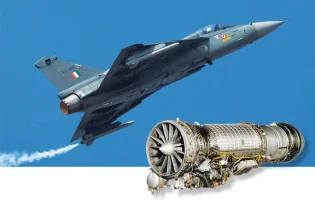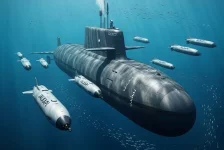- Views: 5K
- Replies: 40
The Indian Navy has unveiled the design for a formidable new warship, the Project-18 Next-Generation Destroyer (NGD), a stealth vessel poised to become one of the most heavily armed ships in the world.
The revelation was made as the Navy's Warship Design Bureau (WDB) celebrated the delivery of its 100th indigenously designed ship, marking a significant milestone in India's journey toward self-reliance in naval manufacturing.
Revealed during a seminar in New Delhi titled “Nation Building Through Shipbuilding,” the Project-18 destroyer represents a major leap in India's maritime capabilities. This new class of warship is designed to succeed the current Visakhapatnam-class destroyers.
With a planned displacement of 13,000 tons, the P-18 will be substantially larger and more powerful than its predecessors, placing it in the category of a cruiser by international standards.
The warship's design incorporates a sophisticated suite of sensors and radar systems. It features four large Active Electronically Scanned Array (AESA) panels integrated into its superstructure, believed to be the indigenous Long-Range Multi-Function Radar (LRMFR).
Developed by the Defence Research and Development Organisation (DRDO), this system provides 360-degree surveillance and can track a vast number of aerial and surface targets at distances exceeding 500 kilometres. This advanced electronic architecture ensures the destroyer can effectively operate and defend itself against modern threats in a complex combat environment.
The most striking feature of the Project-18 is its unprecedented firepower. The vessel is designed to carry a total of 144 Vertical Launch System (VLS) cells, which house a variety of missiles for different missions. This arsenal is planned to include:
- Long-Range Surface-to-Air Missiles (LRSAM): 32 VLS cells will be dedicated to long-range air defence missiles, likely the developmental PGLRSAM with a range of 250 km, providing a protective shield against enemy aircraft and ballistic missiles.
- Cruise Missiles: 48 universal VLS cells are intended for a mix of BrahMos Extended-Range supersonic cruise missiles and the Indigenous Technology Cruise Missile (ITCM), enabling powerful strikes against ships and land targets.
- Short-Range Air Defence: 64 smaller VLS cells will be equipped with the Very Short-Range Surface-to-Air Missile (VL-SRSAM) system for last-ditch defence against sea-skimming missiles and other aerial threats.
Additionally, the design includes eight slant launchers, which could potentially carry future hypersonic weapons like the BrahMos-2, further enhancing its offensive power.
Reflecting the government's 'Atmanirbhar Bharat' initiative, the Project-18 destroyer aims for an indigenous content of approximately 75%.
It will incorporate advanced stealth features to minimise its radar signature and an efficient Integrated Electric Propulsion (IEP) system.
The ship will also be equipped to handle two multi-role helicopters and features systems for launching autonomous underwater vehicles and drones, making it a versatile platform for anti-submarine warfare, mine countermeasures, and surveillance.
The development of the Project-18 destroyer signals India's firm intent to safeguard its interests in the Indo-Pacific and maintain a robust defence posture.
As stated in the ancient Indian naval ethos, "Jalmev Yasya, Balmev Tasya" (He who controls the seas, holds the power), this next-generation warship is a testament to India's growing industrial capability and its ambition to be a dominant maritime force in the region.



